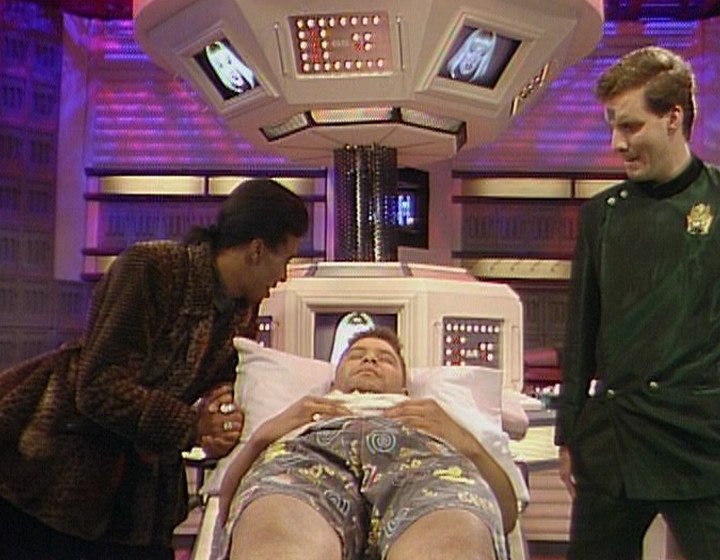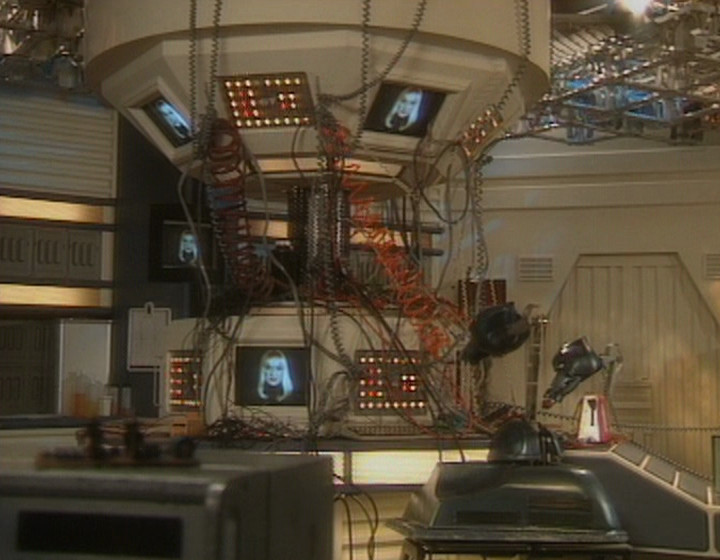Warning: the following is for hardcore TV research nerds only.
The most complicated series of articles I’ve ever written here on Dirty Feed is probably last year’s five-part epic on The Young Ones and flash frames. It’s the kind of project which has you waking up in a cold sweat at night, screaming about /72 edits.
It’s also a project which I think turned out OK. Sure, I may not have got to the root of every single question to do with those damn flash frames, but I got closer than anybody has before, and that’s surely worth something. It certainly manages to be more accurate than most newspaper reports from the time.
Of those remaining questions, though, one of them really bugs me. It’s regarding these two flash frames from “Nasty”, first transmitted on the 29th May 1984:
Despite how much I poked at them, and how much other people poked at them for me, I never managed to figure out the original source for these frames. I mean, I tried. I really, really tried. I even ended up looking through programmes about sodding pottery that the BBC broadcast in the early 80s. No luck. What programme did those two shots originate from?
The only clue we have is the following sentence in the paperwork for “Nasty”:
Flash frame of tap dripping from K065402 transferred to H25992, and Potter’s Wheel from SKP003375 transferred to H25992.
There are three spools, aka tapes, mentioned in that sentence. H25992 is the spool which all the flash frames in the series was compiled onto, before they were scattered across the various episodes. But K065402 and SKP003375, the original source of the frames, seemed impossible to track down. No current BBC database – at least any that I know if – seems to recognise those tape numbers. Which is a bizarre state of affairs in itself. Nor did anybody seem to know what those spool prefixes actually meant.
I came up with all kinds of theories, mind. Did “K” stand for TK, or Telecine? Is SKP “Scotland Telecine”? Was I, in fact, going completely mad?
Such thoughts eventually faded. I finally finished the series of articles, made a half-hearted promise that I’d investigate more next year, and that was that. Meanwhile, this year’s long project is an investigation into all the stock footage used in Smashie and Nicey: the End of an Era. And my latest post is on material of lovely young ladies walking down the street, used as part of the sequence on Radio Fab’s DJ handover.
And one of the sources of those lovely young ladies is listed as the following in the paperwork:
Kings Road Stock.
7 secs
SKP2304
BBC
And suddenly, something clicked into place. This was footage taken from an actual stock library, rather than a finished programme. And it had the number SKP2304. The potter’s wheel footage from “Nasty” had the number SKP003375. The “SK” in “SKP” surely stands for “Stock”, and that potter’s wheel footage surely came from a stock library too. It’s quite possible it had never been broadcast before The Young Ones used it.
Of course, questions remain. I say it’s possible it had “never have been broadcast before”, but the emphasis is on “possible”; just because The Young Ones took it from a stock library, its ultimate origin may still have been from a broadcast programme. My only point is that it’s not guaranteed to have done so. And the “K” prefix for the dripping tap material is still up for debate.
I might figure this out in 30 years, you know.
Read more about...
smashie and nicey, the young ones




